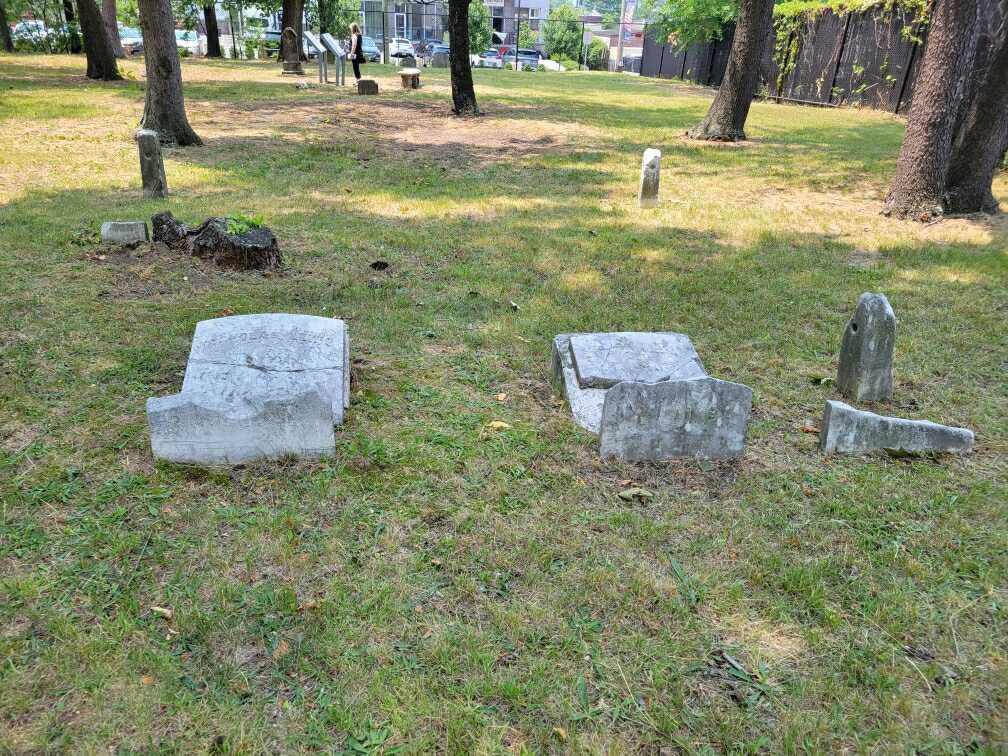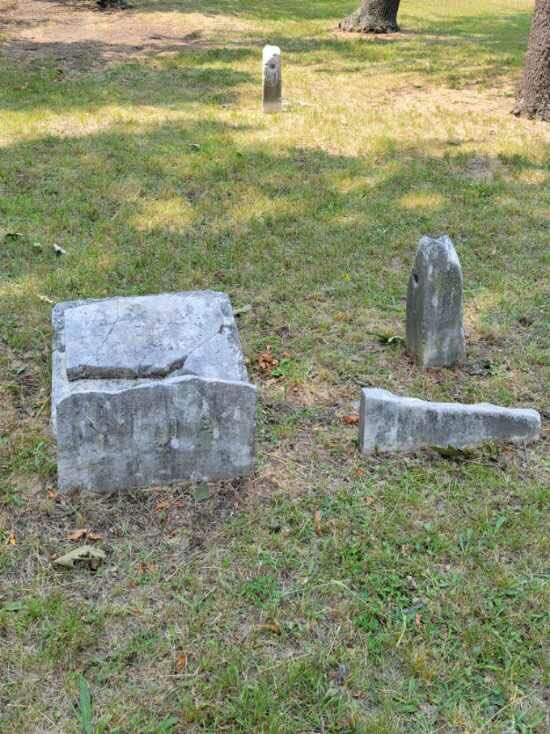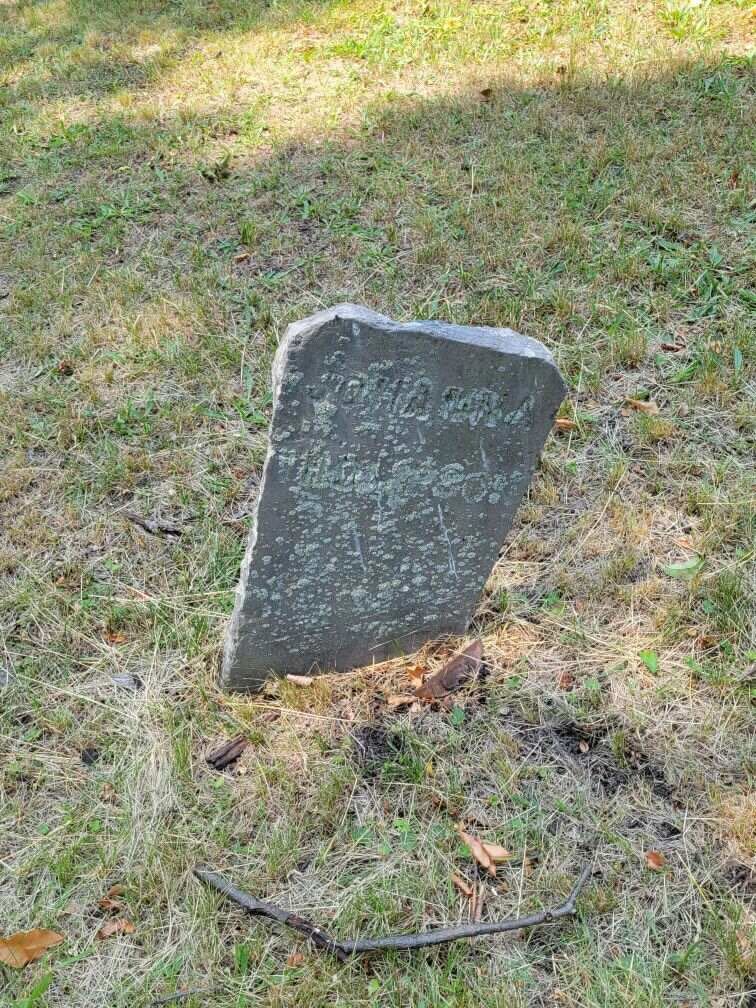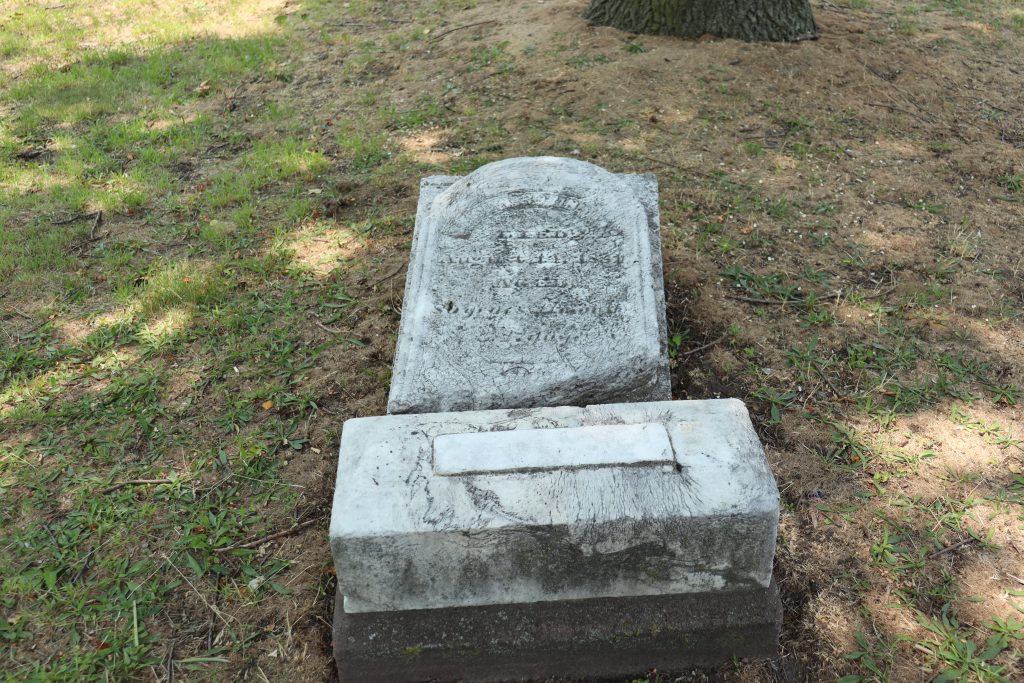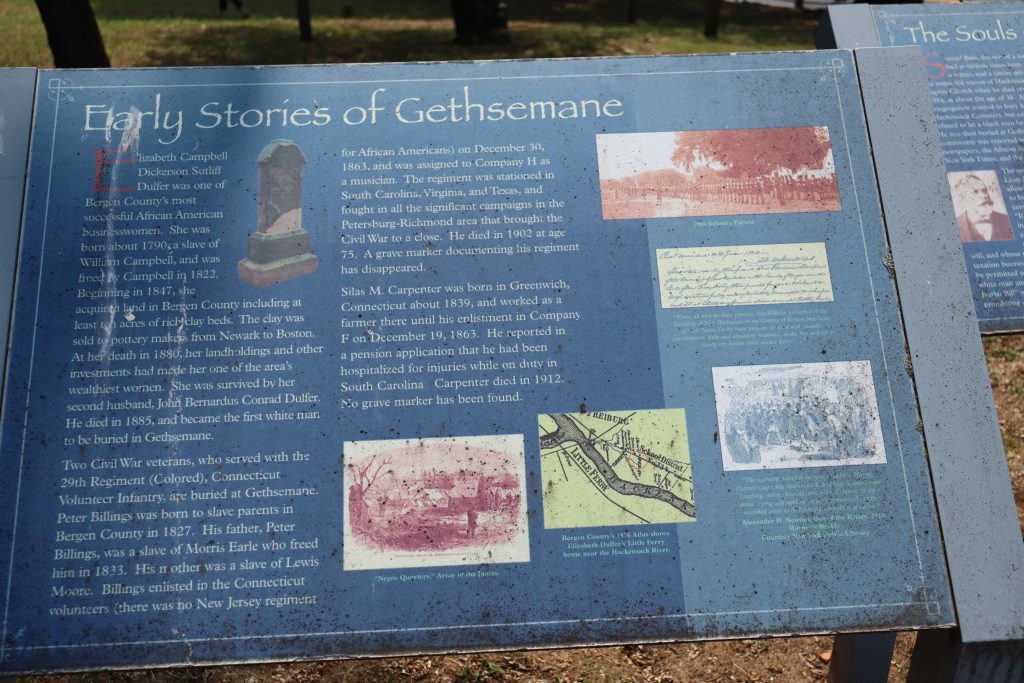St. Mark’s Hosts Juneteenth Pilgrimage
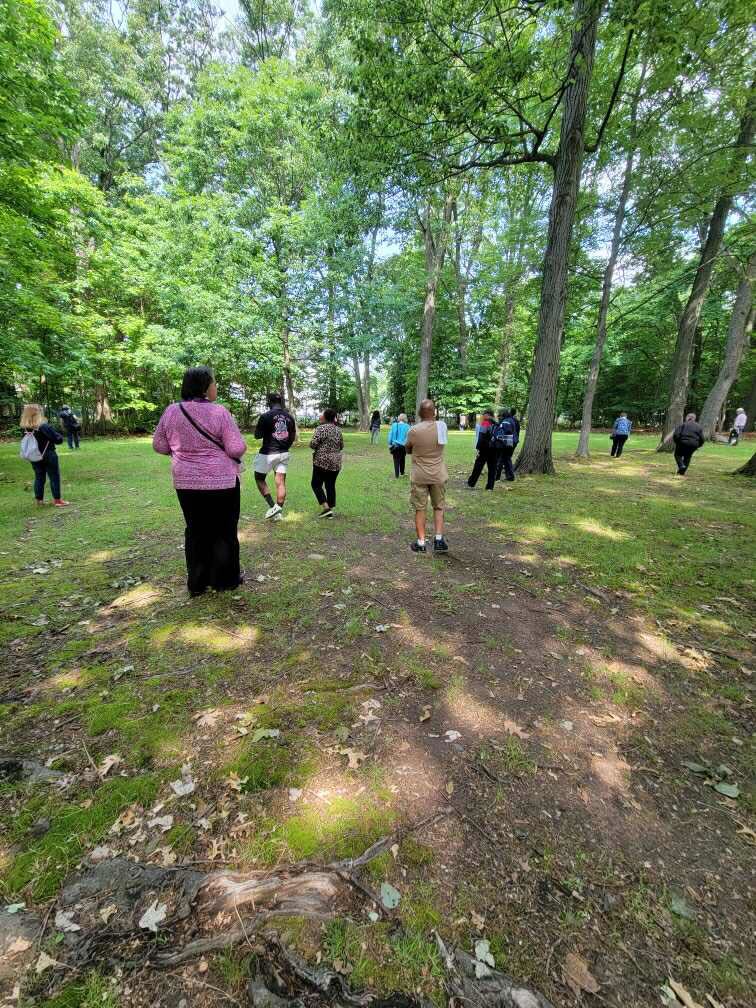
On Saturday, June 17th, and Monday, June 19th, St. Mark’s served the starting and ending point of a pilgrimage to sites in our area significant in the history of African-Americans in our area.
Stops included:
- The African American Baptist Church Cemetery and the Old Slave Cemetery marker in Bergenfield
- The Historic Burial Ground and the Enslaved African Memorial in Teaneck, and
- Gethsemane Cemetery Historic African American Burial Site in Little Ferry.
Dr. Arnold Brown, who was the first Black person elected to represent the people of Bergen County, addressed the group before departing to the first site. Born and raised in Englewood, Arnold Brown received a law degree from Rutgers University Law School in 1957 and practiced law until 1986. In 1965, he became the first African American elected to represent Bergen County in the New Jersey Legislature. In 1985, he founded the Du Bois Book Center in Englewood, which specializes in African American Studies and Black Studies. In the same year, he led the effort to declare Gethsemane Cemetery a county historical landmark. He is the author of Black Loyalists in Bergen County and the Book of Negroes in the Revolutionary War in Bergen County, and the co-author of Images of America: Englewood and Englewood Cliffs.
The event was organized by the Episcopal Diocese of Newark in honor of Juneteenth, the commemoration of the emancipation of enslaved people in the United States. On that day in Galveston in 1865 Major General Gordon Granger ordered the release of enslaved people in Texas, two and a half years after the Federal Government’s Emancipation Proclamation was issued. While slavery was abolished over time across the country, this action impacted some 250,000 people and thus has been chosen as the nation’s “second independence day”. Juneteenth became a Federal holiday in 2021.
Asked about her journey, St. Mark’s warden Marsha Mackey said “All I can say is that it was an overwhelming and humbling experience to walk on what is truly sacred ground.”
Photos and more details below the cut

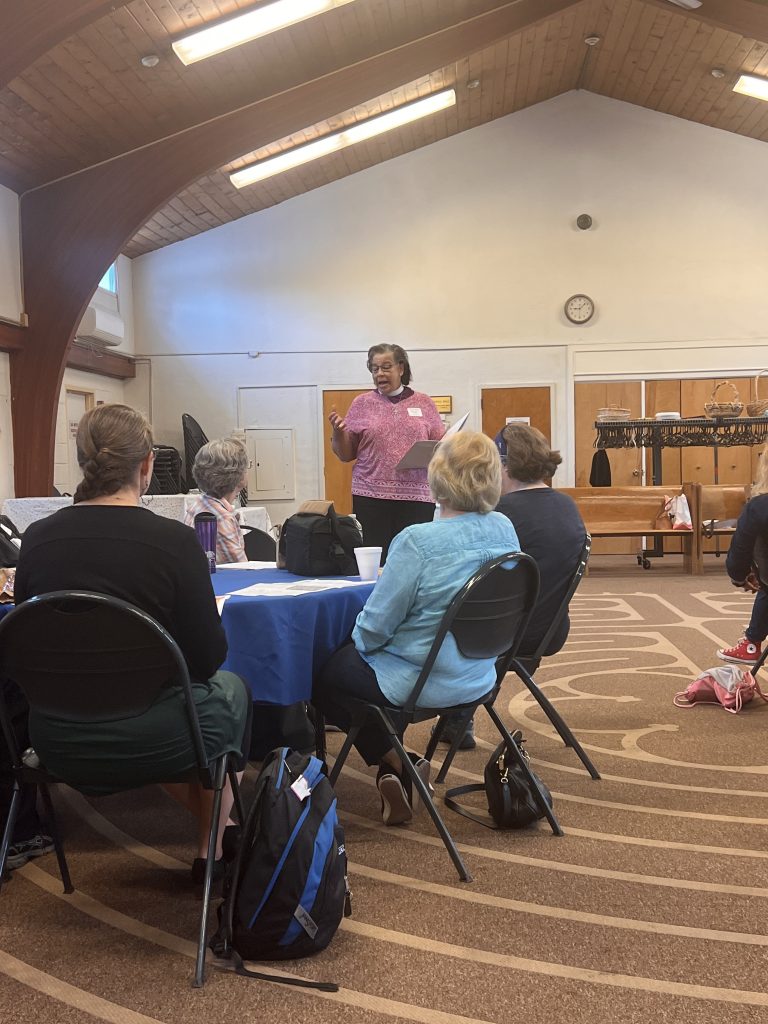

African American Baptist Church Cemetery, Bergenfield, NJ
Our first stop was the African American Baptist Church Cemetery, which was rededicated at a ceremony this weekend. Francis Jackson, a freed slave, purchased 7 ¾ acres of woodland here in 1868. Later it would include the black cemetery and “a plain neat little church” built about 1873. The Pastor, Rev. Nicholas Jackson, lived nearby. The cemetery had 72 burial plots which may have included former slaves. Tombstones no longer exist but some families who rest here are Jackson, Pomplin, Bell, Sisco, Brown, Chase, Blenus, Napson and James.

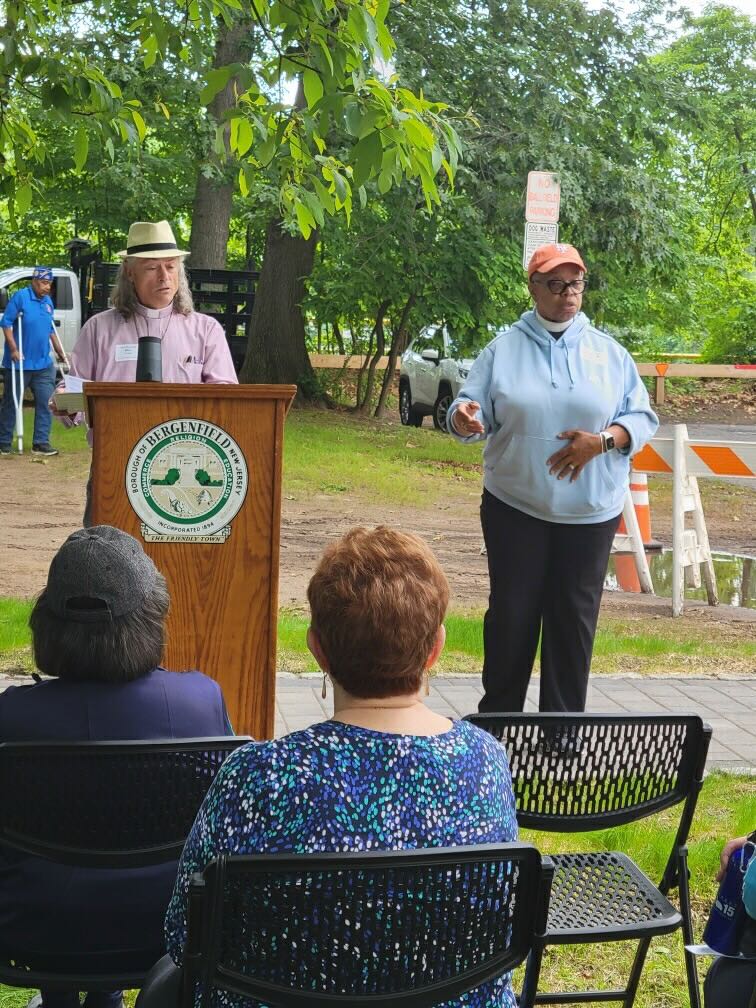
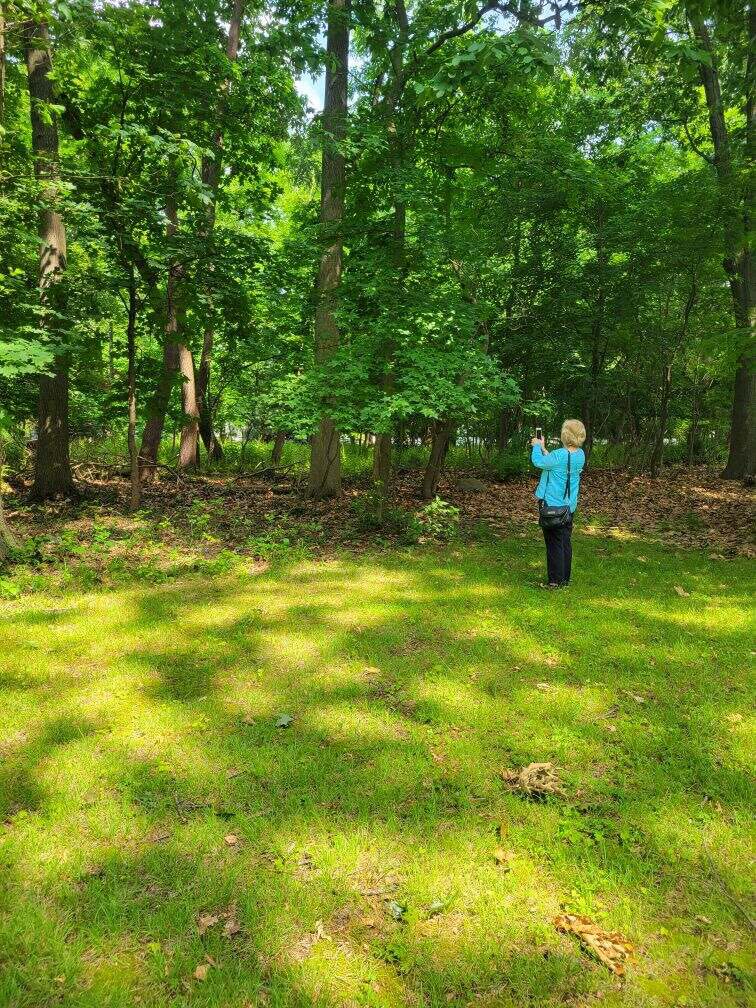

Historical Burying Ground & Enslaved African Memorial, Teaneck
Located on Pomander Walk Road near the Hackensack River, this land was in use as a burial ground by the native Americans prior to the arrival of the European settlers. Enslaved Africans who worked the farmland of the early European settlers were subsequently buried at this location, as were some of the early settlers themselves.
In 1663, the great elder Oratam was the chief sachem for the Ackingsack band (part of the indigenous Lenape nation) who lived along the Hackensack River. Oratam promised to give one Sarah Kiersted a parcel of land between the Hackensack River and Overpeck’s Creek called “Neck of Land”. It consisted of 2,260 acres which included present-day Teaneck, Bogota and Ridgefield Park. The original patent was dated October 21, 1667. On March 25, 1685, the East Jersey Proprietors conveyed 183 acres of this patent, located on the Hackensack River in what is now Teaneck, to Albert Sabboresco (Zabriskie) of Bergen, a planter/farmer. Albert Zabriskie and his descendants and later Henry Kipp, enslaved African-American men who were used to work the farmland and build the early colonial sandstone houses. Several homes from the period are still standing, including the Zabriskie Kipp Cadmus House completed in 1751 and rebuilt in the 1780s after damage during the Revolutionary War. It remains a private residence.
Even though slavery was officially outlawed in 1804, the last slaves were not freed until 1865, making New Jersey the last of the northern states to abolish slavery. On Saturday, June 17th, members of the Black and indigenous population took part in a silent walk from the Martin Luther King memorial on the campus of Fairleigh Dickinson University in Hackensack to the cemetery.

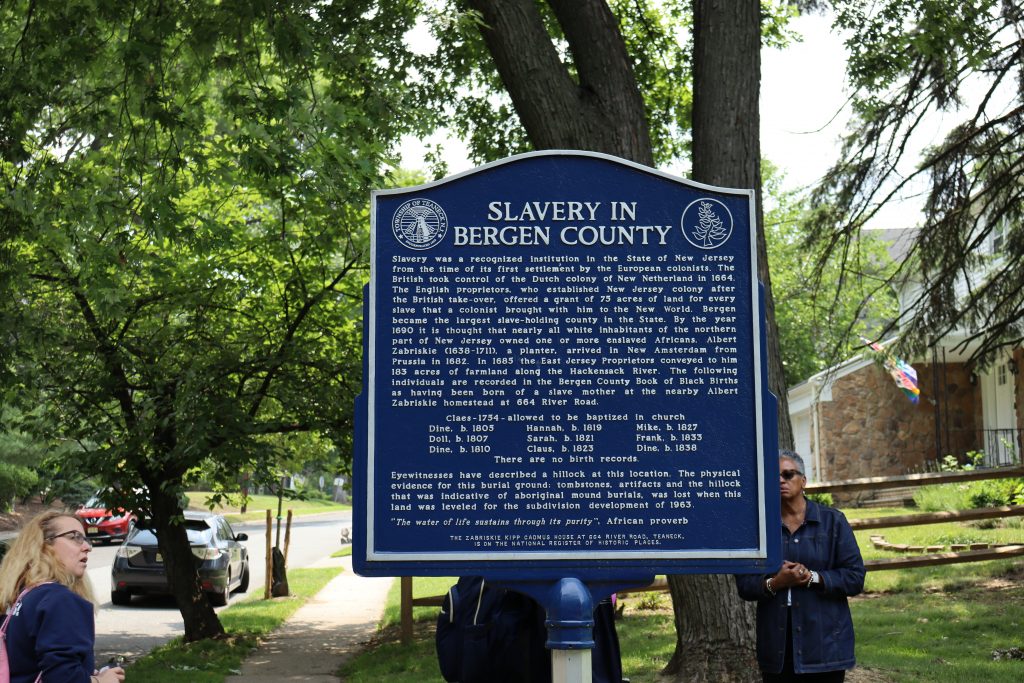




Gethsemane Cemetery, Little Ferry, NJ
The cemetery was opened in 1860 as a burial ground for nearby African-American residents. In 1901 the cemetery was turned over to seven African-American trustees and incorporated as Gethsemane Cemetery. Over 500 people were buried in less than an acre of land, although fewer than 50 gravestones remain intact.
Those buried here include Elizabeth Sutliff Dulfer, who was born into and grew up in slavery on William Campbell’s farm, but beginning in her 50s rose to prominence as one of the wealthiest women in Bergen County. After gaining her freedom, she moved to New York City and married her first husband. In 1847 she returned to buy 87 acres along the river and harvested natural clay deposits for sale to artisanal potters and brick-makers. She is widely credited for launching these industries in the area. Her first husband died by 1855, and in 1859 she married John Dulfer, a Dutch immigrant 33 years her junior. He helped her continue the clay business and they expanded into farming. By 1867 she was able to sell the land at a healthy profit and lived comfortably to the age of 90. In 1885, her husband was the first European to be buried at Gethsemane.
The last burial at Gethsemane occurred in 1924. Bergen County took over the maintenance of the cemetery in 1985 and–in no small part due to Dr. Brown’s efforts–dedicated it as a County Historic Site. Of the three sites we visited, it probably offers the most to explore, with intact gravestones and interpretive signs.
